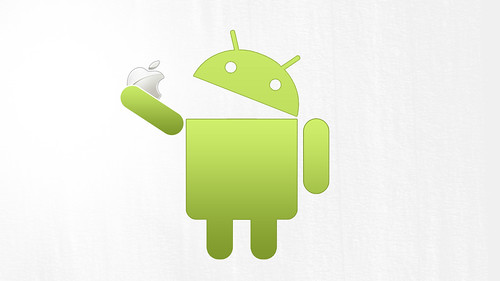RSS readers and mobile technologies were almost made for each other. A spare moment at the bus stop? Check what's new from your favourite sites. So why is it so hard to find a decent RSS reader for Windows Mobile?
My requirements are a little more stringent than most perhaps, but surely not much. So, in the hope that this might be useful for others in the same boat, here's what I've found so far...
My main requirement is this: Often when travelling I don't have access to a fast reliable 3G or Wi-Fi signal, or (if abroad) I don't want to be paying the extortionate mobile roaming charges for data. So I need an RSS reader that can work offline: it needs to download a dollop of RSS feeds when I've got a mobile signal, and let me read them when I haven't. That means caching images (ideally pre-rendered for the mobile screen so that they're fast to download and display) and, in the case of feeds that don't show the full text, also giving me the option of caching the webpage.
Of course not all posts lend themselves to offline mobile viewing. Those that rely on real-time interactions between client and server, for example. Or extensive use of links to other sites, or video. Or where I'm likely to want to make comments or notes beyond a few sentences. So I want to be able to read my feeds at desktop machine too. This means the mobile RSS reader syncing what I've read with either a desktop client or a web-based service.
I used to use
Newsgator, which did the job well: a reasonable mobile reader linked to a web-based server and a desktop client. But they went all corporate, failed to invest in the consumer mobile client (which eventually seized up), and then pulled out of hosting a web-based service altogether in favour of Google Reader. Now I'm a big fan of Google Reader - been with it since the beginning. But Google doesn't do a Windows Mobile client for Reader.
So I've been on the hunt for a suitable RSS reader.
And here's what I found...
Also-rans
I investigated a succession of possibilities, including
viigo and
Yahoo Go, but these did not provide a proper offline experience.
Kinoma,
BeyondPod,
FeedMe and
Ilium Newsbreak, for example, don't yet cache images for offline reading. Others tried to provide a "walled garden" of channels that had to be set-up by the developer, rather than allowing any RSS feed. These didn't last long.
So what's left? I've only been able to find five RSS readers for Windows Mobile that properly support offline reading.
pRSSreader
pRSSreader has almost all the RSS features you'd ever want, including the caching of webpages. I've been using it for well over a year now, since Newsgator Go seized up. It's lovely to use, slightly slow when having to download huge numbers of feeds and large images, but very reliable and customisable. It's one of my favourite apps of all time.
Unfortunately the developer has discontinued development, and the syncing with Google Reader doesn't work yet.
SPB News

SPB generally make great Windows Mobile apps, and recently launched version 2 of
SPB News (previously called "Insight").
However, this app lacks the ability to sync to an online or desktop client. That wouldn't necessarily be a deal-breaker, if it were possible to flag posts for bulk email or online bookmarking, but it doesn't do that yet either. It also doesn't let the user sort feeds into folders, hide read posts, show the read/unread count, and handle opml. Given the quality of SPB's other products, I think they'll probably get there with this one eventually, but it's certainly not there yet.
SBSH GoNews

I had high hopes for
SBSH GoNews. Along with a suite of well-crafted apps, SBSH have thriving support forums. In principle, its feature list has everything I need.
Unfortunately, I wasn't able to get the Google Reader syncing to work, and feeds entered manually were extremely slow to download. According to the forums, this experience is shared by many, it seems. I do hope they can resolve these issues soon.
GarishKernels Egress
Egress looked to be a feature-rich contender, including syncing with Google Reader and caching of webpages.
I had downloaded the app and was about to install it when I came across this from Twitter user
Daft Apeth (who kindly confirmed the info with me):
"Windows Mobile users, do not, repeat DO NOT, install Egress RSS reader - bricked my phone twice. Hard resets are very upsetting..."
In the absence of a support forum, and any updates in over a year, I wasn't willing to risk trying this candidate. A shame.
Speeed Reader

Finally,
Speeed Reader is a new kid on the block. Unlike the apps above, this one has been designed from the ground up to be a Google Reader client rather than an all-singing all-dancing RSS application. This shows in a pleasingly simple interface and a blisteringly fast speed. I also really liked the facility for quick tweeting of a link to an article.
Now the downside: it's still in Beta, and there are quite a few things to be fixed, particularly its propensity to crash, the caching of images, and use of external browsers (such as Opera Mini. At the moment there's also no caching of webpages, and no "next article" button.
However, this app does have the big advantage of being actively beta-tested via the site
xda-developers, so I'm hopeful of rapid improvements.
Conclusions
So what did I find? As of November 2009, nothing that does the job.
Speeed Reader will probably get there soon; in the meantime I'll continue to use
pRSSreader for feeds that are generally easy to read offline, and
Google Reader for the rest. And I'll also be looking out for new possibilities. Feel free to let me know.



























